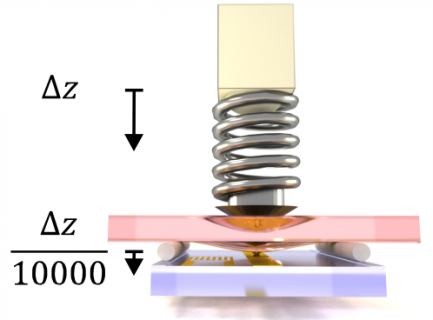Thermoelectricity at nanocontacts
Thermoelectricity is a physical phenomenon that describes how temperature differences within a solid produce electrical voltages. An illustrative application of this would be, for example, charging a wristwatch by exploiting the temperature difference between wrist and environment.
Matthias Popp and Prof. Heiko Weber from the Chair of Applied Physics have now developed an experimental setup that makes it possible to investigate thermoelectricity at nanocontacts. By bending two silicon carbide plates placed on top of each other, electrodes applied to them can be approached in such a controlled way that nanometer-sized contacts are formed between them or tiny objects such as individual molecules can be trapped and contacted. Matthias Popp and Heiko Weber found relations that link the purely electrical properties of the nanocontacts with the thermoelectric properties. The researchers hope that the new technology will help them better understand charge transport through individual molecules and contribute to the improvement of economically viable thermoelectric generators. Although these have existed for several decades, they are only used in niche applications because of their very low efficiency. Theoretical considerations suggest that significant increases in efficiency could be achieved by exploiting quantum mechanical effects.
The results were published in the renowned journal Applied Physics Letters.
- , :
An ultra-stable setup for measuring electrical and thermoelectrical properties of nanojunctions
In: Applied Physics Letters 115 (2019), Article No.: 083108
ISSN: 0003-6951
DOI: 10.1063/1.5116673
Weitere Informationen:
Prof. Dr. Heiko B. Weber
Chair of Applied Physics
- Phone number: +49 9131 85-28421
- Email: heiko.weber@fau.de

